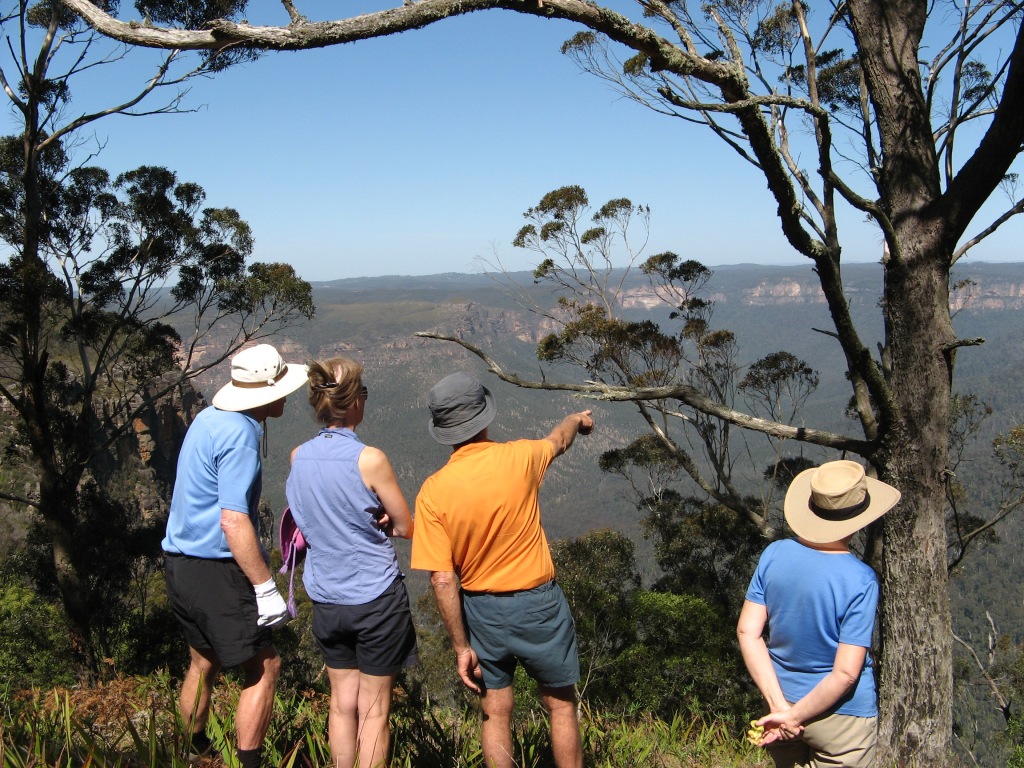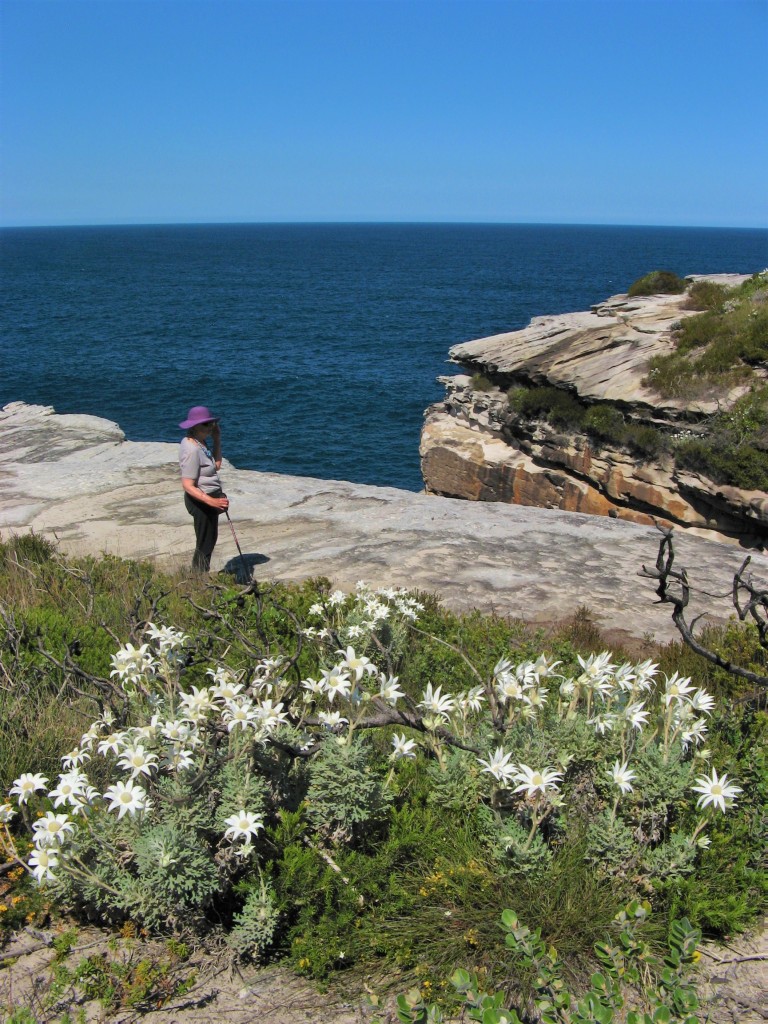Bushwalking (hiking): less a journey; more an encounter

(This post supplements material in chapters 2 and 3 of Connect with Nature.) I have been working on a project that got me thinking about bushwalking leadership. I have been leading bushwalks for decades – about two a month during my most active years. Some of my bushwalking leadership was in the context of training courses in bushwalking and camping.
In line with the philosophy and practice of my bushwalking club, I approached leading a walk with the aim of participants having a safe and enjoyable experience. Among other things, this meant that:
- the walk was familiar to me or that I had made myself as thoroughly informed as possible about the features and demands of the walk
- I had satisfied myself that the likely weather conditions were favourable
- I had accurately assessed the walk’s hazards and risks and had made appropriate contingency plans
- party members understood what the walk involved, were capable of doing it and had the necessary equipment
- party members accepted that the tempo of the walk would be geared to the slowest walker
- ensuring that party members had been introduced and were aware of my plans for the walk
- during the walk, remaining alert to any physical or psychological difficulties within the party
- being ready to provide encouragement and assistance
- regularly checking location and route throughout the walk
- having regular rest stops
- indicating features of interest along the way
- budgeting the group’s time and energy to ensure that intended goals can be reached
Now, everything in this list is sound bushwalking leadership practice. But notice that the collective focus of the practices is the WALK. This is not to say that the personal needs of party members are overlooked. Far from it – but for the most part, the needs that are mentioned are ones primarily to do with the activity per se – with the WALK.
One practice that breaks the mould is ‘indicating features of interest along the way’. From my earliest days as a leader, I followed this practice enthusiastically. I found (and still find) enormous pleasure in showing people a splendid panorama, an atmospheric forest or a beautiful waterfall, for example. That said, bushwalking leadership for the younger Les was mainly about the walk.
But that has changed. Having come to the realisation that walking in nature is a priceless opportunity to tap into one of the most precious resources of life, I see bushwalking leadership in a new light. For me, it is now more than organising and managing an activity; it is also about facilitating engagement with nature in a way that is most beneficial for people’s well-being.
Nature, of course, has an amazing power to enrich human life without our help. But both scientific and anecdotal evidence indicates that there are things we can do to enhance nature’s impact on our well-being and health.
Thinking about this has prompted me to ask myself: As a walks leader, what would I have done differently to facilitate engagement with nature?
I am still thinking about this but, so far, I have identified several ‘nature engagement practices’ that I would add to my bushwalking leadership ‘to-do’ list:
- Include in my description of a walk some of the mental and emotional experiences I expect to have – for example, ‘I am looking forward to the buzz of pleasure I will get when I see…’; ‘I always find this walk leaves me feeling happier and more relaxed’; ‘I will do my best to make time for us just to enjoy the tranquillity of…’.
The sentiments I would share would be genuine and not presented as a ‘sales pitch’. My reason for sharing them would be twofold: first, to raise awareness of the well-being benefits of nature; and second, to raise expectations about the walk’s well-being impacts (It has been demonstrated that people are more likely to benefit from nature experiences if they expect to).
- Make a point of helping party members feel secure throughout the walk by emphasising that the ‘whip’ (an experienced walker always at the rear of the party) will ensure that no one is left behind, for example; by maintaining a walking pace that is comfortable for everyone; by having R & R stops at intervals dictated by the party’s needs; by ensuring that less confident members are in the company of experienced and confident walkers.
When feeling secure and comfortable, walkers are more likely to relax, to be open to the environment around them, to tune into inner thoughts and feelings and, when able to walk easily and rhythmically, to lapse into a state of ‘flow’ (pleasurable satisfaction and sense of fulfilment).
- Facilitate being ‘in the present’ throughout the walk by such means as: encouraging party members to spend a few minutes of mind-quietening before a walk; commenting occasionally during the work on sights, sounds, smells and textures that I have appreciated (and inviting others to do the same); suggesting, when asked or when seems appropriate, simple ‘engagement strategies’ (e.g., savouring, attending deliberately and systematically to sights, sounds, aromas and textures, ‘eyes wide open meditation’)
Nature is more able to work its magic on us when we are present with it mentally and emotionally.
- Facilitate the sharing of experiences, incidentally (at rest and lunch stops, for example) or more purposefully through photography, art, journaling or social media (Whats App, Instagram and Facebook) messaging.
Reflecting on nature experiences, especially those that have evoked pleasure, awe and wonder, expands and extends the duration of their impact on psychological well-being and mental health.
- Ensure that the association of indigenous peoples with the land being walked on is acknowledged and any evidence or legacy of that association is treated sensitively and respectfully.
Walking in nature provides opportunities to connect not only with a natural environment but also with the history, values and culture of peoples who were, and perhaps still are, custodians of that environment.
As well as modifying my concept of bushwalking leadership, my late-in-life realisation that a connection with nature is essential for human well-being has also liberalised my understanding of bushwalking. There was a time when a ‘real’ bushwalk for me was in a wilderness area with camping involved. For many years, I virtually ignored day walks. Now, my concept of bushwalking embraces any walk in a natural setting that has the potential to deepen nature connectedness and enhance well-being. A 20 minute stroll along a well-constructed track to look at a wildflower display or a waterfall, for example, is equally a bushwalk as a 20 km hike.
This understanding is close to the Scandinavian concept of frituftsliv (fresh air life). The central message of frituftsliv is the importance of experiencing the natural world directly in an uncomplicated and ‘ego-free’ way. Frituftliv is an unconditional relationship with the natural world – a relationship with no strings attached. In a frituftliv relationship, we seek nature for no other reason than it is there and is very good for us.


